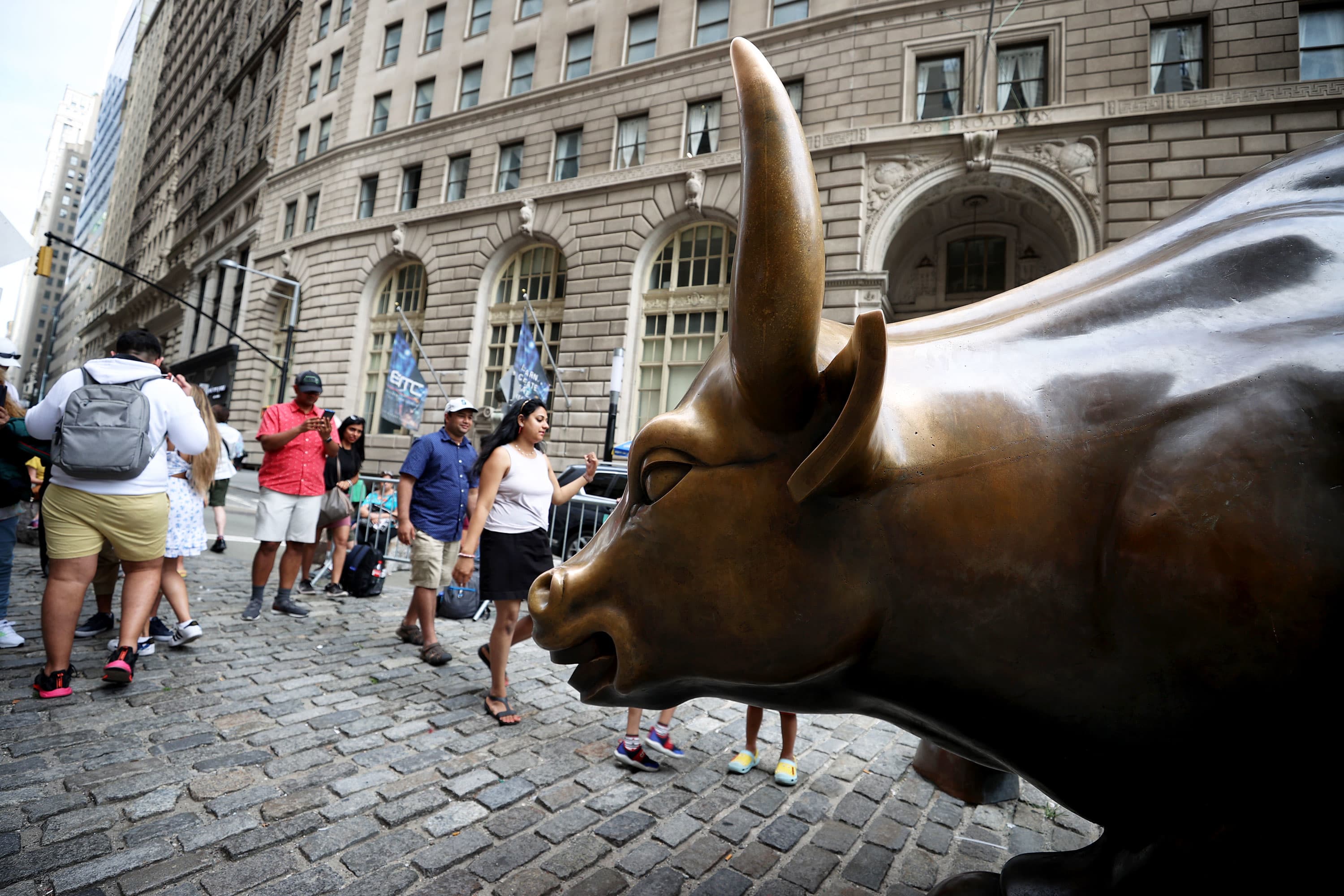
Tourists are lined up for taking photos by the Charging Bull Statue in the financial district of New York, on August 16, 2021.
Tayfun Coskun | Anadolu Agency | Getty Images
Overall U.S. household wealth has never been this high, thanks largely to gains in the stock market that are a bigger share of that prosperity than ever before.
In fact, equity holdings now make up about half of the $109.2 trillion of financial assets that households owned through the second quarter of 2021, according to Bank of America. Other than stocks, financial assets also include bonds, cash, certificates of deposit and bank deposits.
The equity share of assets is a 70-year high, Bank of America said.
Overall household net worth jumped to $141.7 trillion in the second quarter, the result of a $3.5 trillion increase in the value of corporate equities as stocks continued their climb during the period. Including nonprofits, the equity share of net worth is 41.5%, according to the Federal Reserve.
While the news has been good for individuals who own stocks, there’s an ever-present specter of risk-taking that raises worries should the market’s fortunes change. Wall Street saw the longest bull market in history end early in 2020, then quickly resume and power to new records through the back part of 2021.
“Money goes where money grows,” said Mitchell Goldberg, president of ClientFirst Strategy. “As the stocks value keep going up, they’re continuing to put money there. They’re going to keep putting money into it until there’s a better place to put it.”
The S&P 500 has risen just over 15% for 2021, on the backs of friendly fiscal and monetary policy and robust growth in corporate earnings.
A significant part of the policy backdrop has been record-low interest rates and aggressive money-pumping from the Federal Reserve, along with massive fiscal stimulus from Congress.
With the Fed making the first noises about tightening and Washington politicians battling over more spending, Goldberg wonders what will happen if the market-friendly policies start to turn around.
“People’s wealth are up on two things, stocks and houses, and they’re both more or less tied to interest rates,” he said. “There have been a lot of policies that have pushed the value of these assets up. What happens when the policies go away? That’s the $64 trillion question.”
Fed officials have indicated they likely will begin reducing the pace of their monthly asset purchases by the end of the year. Still, interest rate hikes seem a ways off, with Philadelphia Fed President Patrick Harker affirming Friday that the central bank is unlikely to start hiking until late-2022 or early 2023.
Bank of America chief investment strategist Michael Hartnett noted Friday that clients “have sold stocks (modestly) past 5 weeks.” The bank’s indicator of sentiment has gone from almost bullish enough to trigger a contrarian “sell” signal to a bit more cautious.
Still, investors have poured about $34.5 billion into U.S. equity mutual funds and ETFs alone over the past 12 months, according to Morningstar, indicating there’s still plenty of appetite for stocks.
Goldberg said he’s cautious in that kind of environment, and is advising his older clients to trim their holdings somewhat and start building up cash in what could be a more challenging environment.
“Everyone who is invested today is investing the same way, based on falling interest rates, globalization, great supply-demand chains and low inflation,” he said. “Those are huge macroeconomic cycles, and it looks like we’re seeing the reverse now. While we go through those changes, it’s going to create a lot of volatility, a lot of peril and a lot of opportunity.”
Become a smarter investor with CNBC Pro.
Get stock picks, analyst calls, exclusive interviews and access to CNBC TV.
Sign up to start a free trial today.




